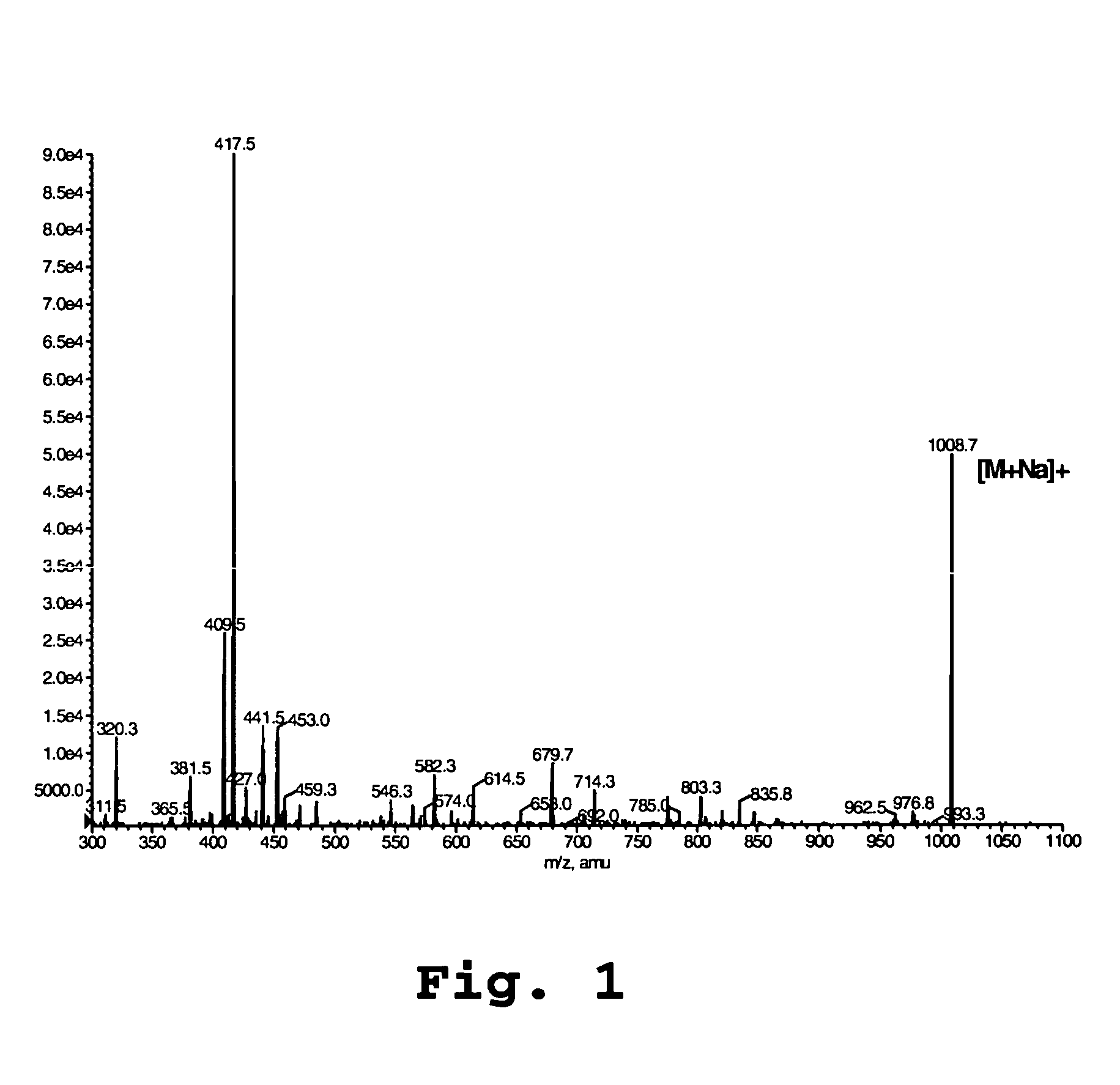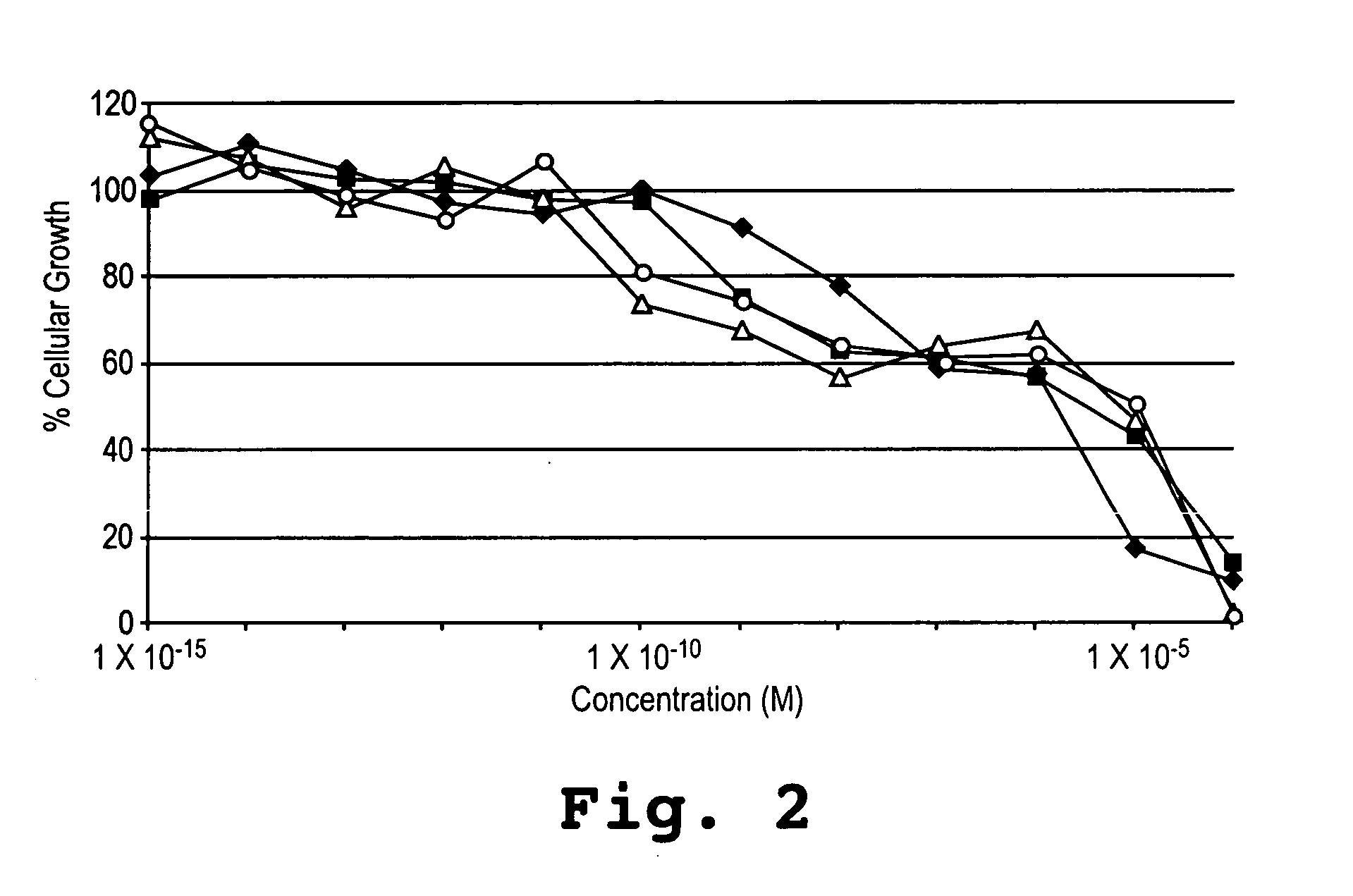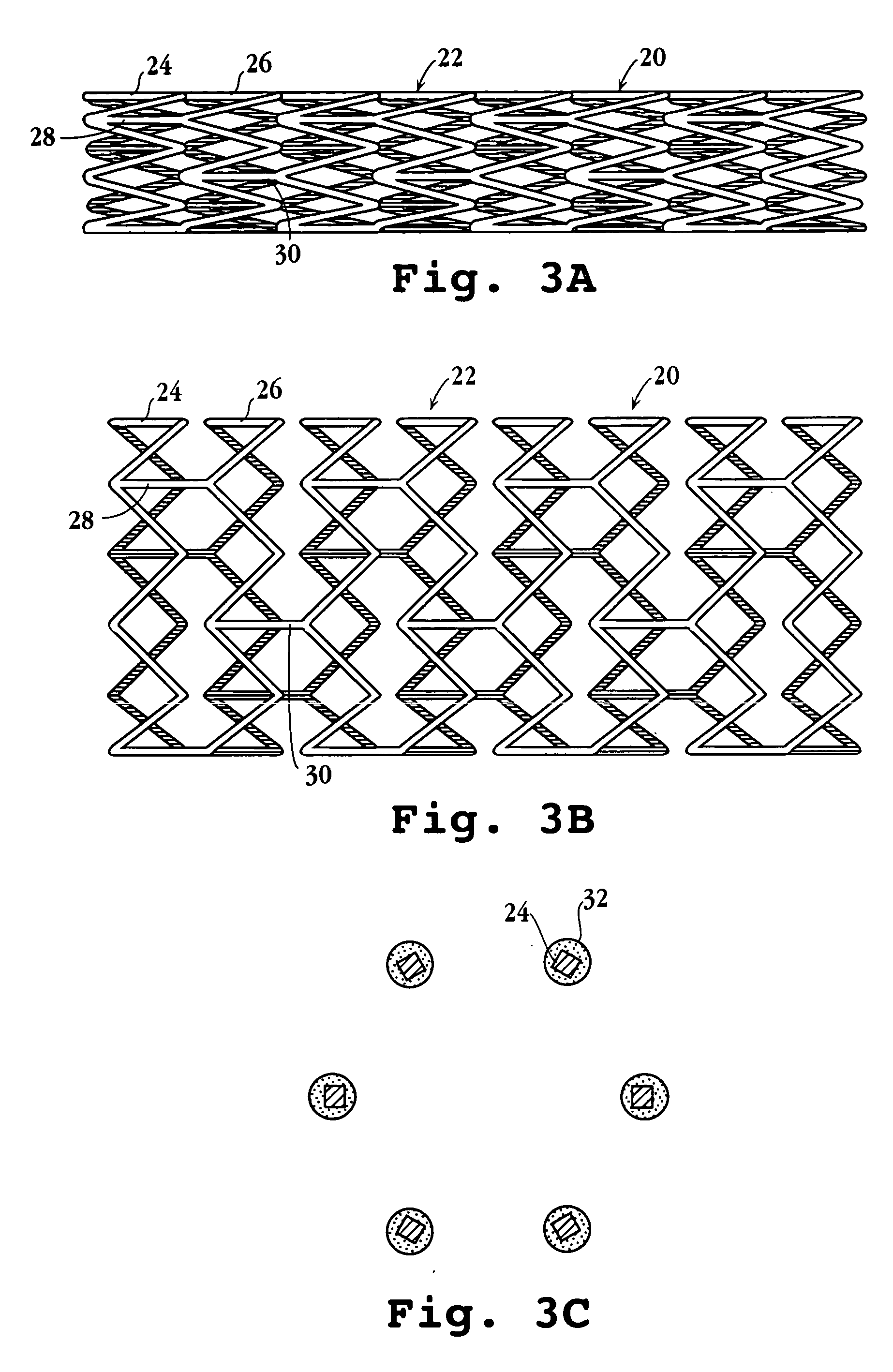42-O-alkoxyalkyl rapamycin derivatives and compositions comprising same
a technology of alkoxyalkyl rapamycin and derivatives, which is applied in the direction of plant growth regulators, biocide, animal husbandry, etc., can solve the problems of limited use of rapamycin as a pharmaceutical drug, low and variable bioavailability, and only very small soluble rapamycin, so as to enhance the adhesion of the drug compound
- Summary
- Abstract
- Description
- Claims
- Application Information
AI Technical Summary
Benefits of technology
Problems solved by technology
Method used
Image
Examples
example 1
Preparation of 42-O-(2-ethoxylethyl) rapamycin (Biolimus A9)
[0124] A. Synthesis of 2-ethoxyethanol Triflate
[0125] To a stirred, cooled (0° C.) solution of 4.28 g 2-ethoxyethanol (Aldrich Chemical) and 10.14 g 2,6-lutidine in 160 mL CH2Cl2 under nitrogen was slowly added 19.74 g trifluoromethanesulfonic (triflic) anhydride. The mixture was washed with four portions of 200 mL brine and the organic solution dried over anhydrous sodium sulfate, filtered and concentrated. The residue was purified by flash chromatography on silica gel, 200400 mesh (75:25 hexanes-ethyl ether (v / v)) to afford the triflate of 2-ethoxyethanol: light yellow liquid, TLC Rf=0.47 using hexanes-ethyl ether 75:25 (v / v).
[0126] B. Reaction of 2-ethoxyethanol Triflate with Rapamycin
[0127] To a stirred solution of 1 g rapamycin, and 7.66 g 2,6-lutidine in 14.65 mL toluene held at 60° C. was added 5.81 g 2-ethoxyethanol triflate. Stirring was continued for 90 minutes after which 50 mL ethyl acetate was added to the ...
example 2
Preparation of 42-042-methoxyethyl) Rapamycin
[0130] A. Synthesis of 2-methoxyethanol Triflate
[0131] To a stirred, cooled (0° C.) solution of 1.80 g 2-methoxyethanol (Aldrich Chemical) and 5.07 g 2,6-lutidine in 80 mL CH2CL2 under nitrogen was slowly added 9.87 g trifluoromethanesulfonic (triflic) anhydride. The mixture was washed with five portions of 100 mL brine and the organic solution dried over anhydrous sodium sulfate, filtered and concentrated. The residue was purified by flash column chromatography on silica gel 200-400 mesh (75:25 hexane-ethyl ether (v / v)) to afford the triflate of 2-methoxyethanol: light brown liquid, TLC=0.61 using the same solvent system as above.
[0132] B. Reaction of 2-methoxyethanol Triflate with Rapamycin
[0133] A mixture of 8.0 mg rapamycin, 52.9 μL lutidine, and 34 μL 2-methoxyethanol triflate was held at 60° C. in a 1.5 mL microcentrifuge tube (Laboratory Plastics) for 1.5 hours. 150 μL ethyl acetate and 150 μL 1M HCl was added and the solutions...
example 3
In Vitro Potency of 42-O-(2-ethoxyethyl) Rapamycin Derivative
[0134] Smooth muscle cell cultures were subjected to increasing doses of 42-O-(2-ethoxyethyl) rapamycin, 42-O-(hydroxy heptyl) rapamycin, and rapamycin over 8 or 9 orders of magnitude concentration in the culture medium. The ability of the cell culture to reproduce was assessed after drug exposure by addition of a colored reagent which causes a color change in the surviving cells, followed by cell cytometry. The ability of the cells to migrate was assessed when cells from the culture moved through a porous membrane barrier adjacent the culture, and again by staining and cell cytometry. The results of these tests are shown in FIG. 2 for human smooth muscle cells. The results show that the 42-O-(2-ethoxyethyl) rapamycin (squares) and 42-O-(hydroxy heptyl) rapamycin (diamonds) have similar potency in growth suppression of smooth muscle cells over 5 orders of magnitude concentration, for both porcine and human cells.
PUM
| Property | Measurement | Unit |
|---|---|---|
| weight percent | aaaaa | aaaaa |
| weight percent | aaaaa | aaaaa |
| diameter | aaaaa | aaaaa |
Abstract
Description
Claims
Application Information
 Login to View More
Login to View More - R&D
- Intellectual Property
- Life Sciences
- Materials
- Tech Scout
- Unparalleled Data Quality
- Higher Quality Content
- 60% Fewer Hallucinations
Browse by: Latest US Patents, China's latest patents, Technical Efficacy Thesaurus, Application Domain, Technology Topic, Popular Technical Reports.
© 2025 PatSnap. All rights reserved.Legal|Privacy policy|Modern Slavery Act Transparency Statement|Sitemap|About US| Contact US: help@patsnap.com



